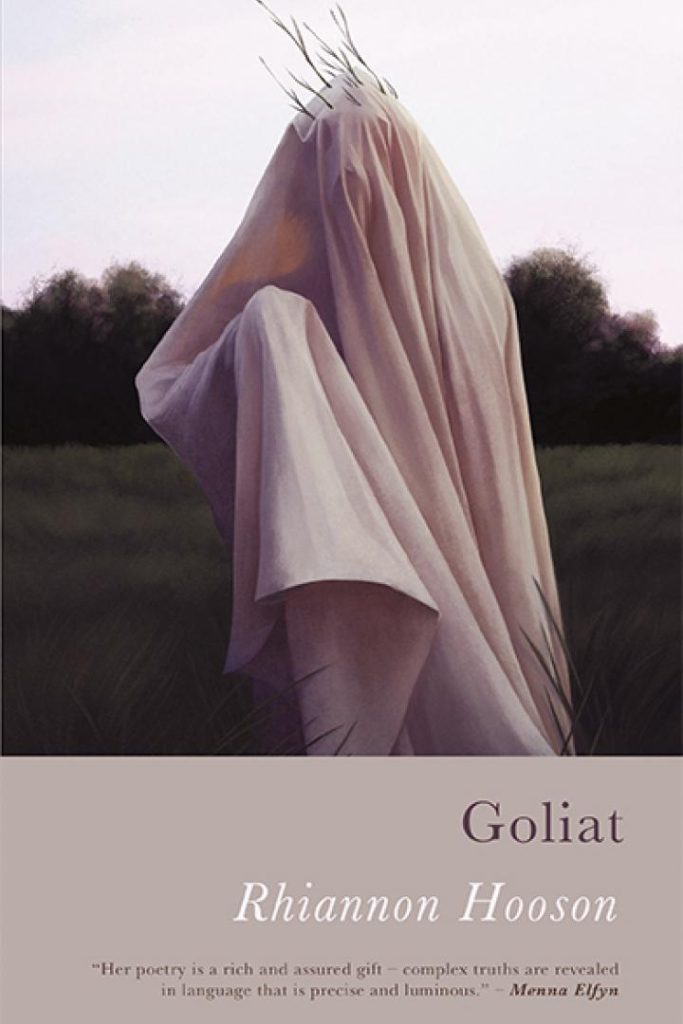Goliat
Rhiannon Hooson
(Seren, 2022); pbk: £9.99
There is a stark, polarising beauty in Winter nights. The cold air makes the warmth shine all the brighter. Rhiannon Hooson’s Goliat follows this style of beauty and intrigue, illuminating its subjects through visual and lyrical contrast. The collection pulls the reader into a diverse array of striking landscapes. These places are as much the focus as the people who occupy them, twisting the narratives around complex histories and unique physical features that have moulded them. Throughout, the sense of place is explored in an engaging and inventive way. One feels the lived experience of a place in flux, a living landscape, such as the seaside town in ‘I Know What Loves Are Trembling Into Fire’:
The unprotected fibre
of a flesh which knots itself into air,
The edge of a beech wood where pigeons
Break the leaves’ light, a town laid out
at the narrow limits of the shore:
everything.
The diversity of poetic forms, such as narrative prose, tackles the collection’s central themes of the environmental crises, community connections, and the tactile nature of shared traditions. The ability to approach these subjects from different angles and focus on minute details across multiple poems is fully utilised. One example of this can be seen across two of her poems discussing the trees, where different areas of focus give each a unique tone and thematic relevancy, ‘How the Oak Tree Survived the Ice Age’ and ‘Everything is Solved in November:
large smooth beauties like conkers
small beads nestled in a socket
like a bramble thicket
By the ash trees, the old van
rusting to its abstract bones.
Uncertainty and fluctuation are integral to these issues. The prose poem ‘Full Moon on Fish Street’ is a fictional narrative spread across five pages interspersed as fragments throughout the second half of the collection. Presented as a title followed by sporadic untitled sections of a single prose piece. The bold choice to use such an unusual format and rely on the memory of the reader is a unique tie-in to the themes of temporality that pervade the collection. When presented amongst the more traditional forms, this prose poem stands out in a way that would be lost without contrast. This is beneficial given its substantial length of eighty pages, making it a pleasure to read the collection sporadically or in longer sittings
That year Aubrey’s work was characterised by unusual
touches of gentle colour among the harsher lines more
typical of her style. The series of watercolour sketches she
had made between March and September entitled Tidelines
I – XII are often cited as a turning point in her work,
showing as they do a series of local rituals and ceremonies.
The atmosphere of Goliat is ripe with mystery. The brief snapshots of stories and landscapes contain intense detail while leaving much of the context to the imagination. For example, in the poem, “Event Horizon’ you see the mortality and destruction necessary for discovery and learning through the authors’ emotional connection to a robot that has been sent to space. The details of how, when, and why are left up to interpretation. Even shape and physical structure are obscured; all that matters in that moment is the anthropomorphic perception of the robots’ eyes, and the tangible connection that still exists between the speaker and the robot through the camera feed that continues to roll
When your robot (which you have named
Grace) passes over the lip of the black hole
I would like to go with her, or at least
to send some poems.
I would like to sit in a dark room
and let the feeds from Grace’s cameras
drip ink into my eyes [.]
Across the breadth of these poems, one sees both the mundane and the fantastic, drawn out and examined with equal care. Creating an exploratory body of work that is incredibly diverse in both its lyrical and thematic reflections.
Ellen Harrold


Leave a Reply